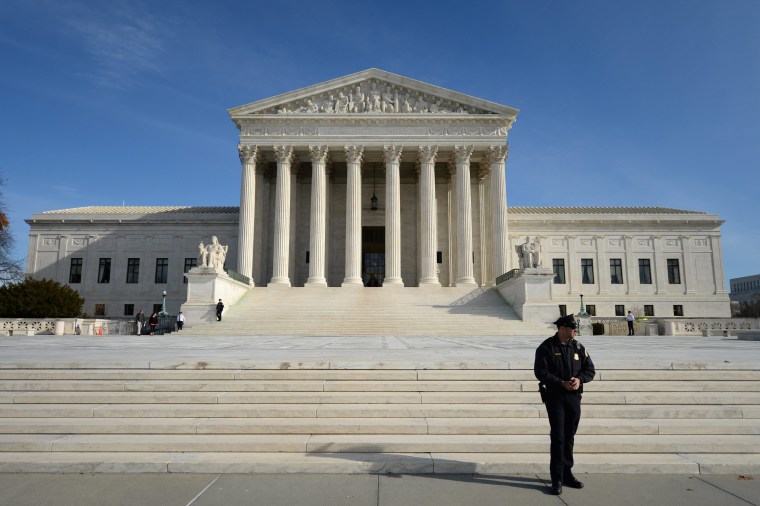The big case before the U.S. Supreme Court may seem a little dry for anyone who isn't a political science major, but it's an important one when it comes to separation of powers and the ruling will have a significant impact.
The Supreme Court is scheduled to hear oral arguments on Monday in a case with potentially dramatic long-term implications for the balance of power between the executive and legislative branches. The legal question is whether the president may temporarily appoint people to staff executive branch agencies when Congress is not conducting business but also not technically in recess -- known as pro forma sessions.
For those who've forgotten about the case, let's revisit our coverage from May.
The Constitution extends some fairly specific powers to the nation's president, including the ability to make recess appointments. In practice, however, using this power is rather tricky.
In the last Congress, President Obama nominated some qualified officials to serve on the National Labor Relations Board, only to have Senate Republicans block their confirmation votes. When lawmakers left town, the White House said the Congress was in recess, and gave the officials temporary recess appointments. Republicans balked -- they weren't really in recess, they said; they only looked like they were in recess, so Obama exceeded his authority.
On the surface, Republicans complaints are not without merit. Putting aside the policy particulars, it's not up to the executive branch to decide when the legislative branch is legitimately in session and when it's not. If Congress says, "Technically, we're in session," there's no reason to think a president has the authority to respond, "I've decided you're not."
But as is often true with big Supreme Court cases, the details make the dispute a little tricky.
The way the federal confirmation process is supposed to work is simple: when there are judicial and/or administrative vacancies, the president nominates officials to fill those vacancies. The Senate is responsible for scrutinizing the nominees and either approving or rejecting them.
The executive, in theory, has a workaround called recess appointments. In fact, Article II, Sec. 2, of the Constitution says, "The President shall have power to fill up all vacancies that may happen during the recess of the Senate, by granting Commissions which shall expire at the End of their next Session." Note that it says, "the recess," not "a recess."
Why does the distinction matter? In the early days of the country, framers saw recesses that could last months and wanted presidents to be able to fill key positions temporarily in emergency situations without the Senate's consent. There's generally a lengthy break following the final adjournment for the legislative session, and this is generally considered "the recess." The provision was not about giving presidents the authority to circumvent Congress when the White House felt like it.
As you might imagine, this has long been a point of contention between the branches, with presidents defining "recess" however they saw fit. More than a century ago, Teddy Roosevelt once made recess appointments when the Senate was off for an afternoon.
But for most of the Obama era, the rules have effectively been rewritten in a way that's tough to defend. Congressional Republicans, before the recent use of the nuclear option, decided they wouldn't just block nominees through filibusters, making it impossible for some agencies to function at all, but they also decided that there will no longer be any recesses either, so the president's constitutional power to make recess appointments has effectively been eliminated, too.
How? Through the use of brief, pro-forma sessions -- sessions in which the Senate isn't actually working, but it's technically not in recess, either. Obama's Justice Department and the Office of Legal Counsel said the president didn't have to honor the charade and can make recess appointments when the Senate is effectively in a recess.
So far, this argument hasn't proven persuasive in the courts, and it'll be up to the high court to resolve the tension.
In light of the nuclear option, the procedural fight isn't quite as important as it was when the case first started working its way through the courts, but clarity on a president's recess-appointment power will set a precedent for this and future administrations, and if the justices rule against Obama, actions taken by the National Labor Relations Board after Obama's recess appointments may be invalidated.
